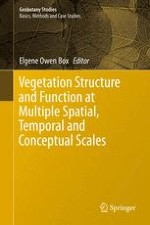2016 | OriginalPaper | Buchkapitel
Fallopia japonica (Japanese Knotweed) in Japan: Why Is It Not a Pest for Japanese People?
verfasst von : Michiko Shimoda, Norifumi Yamasaki
Erschienen in: Vegetation Structure and Function at Multiple Spatial, Temporal and Conceptual Scales
Aktivieren Sie unsere intelligente Suche, um passende Fachinhalte oder Patente zu finden.
Wählen Sie Textabschnitte aus um mit Künstlicher Intelligenz passenden Patente zu finden. powered by
Markieren Sie Textabschnitte, um KI-gestützt weitere passende Inhalte zu finden. powered by
